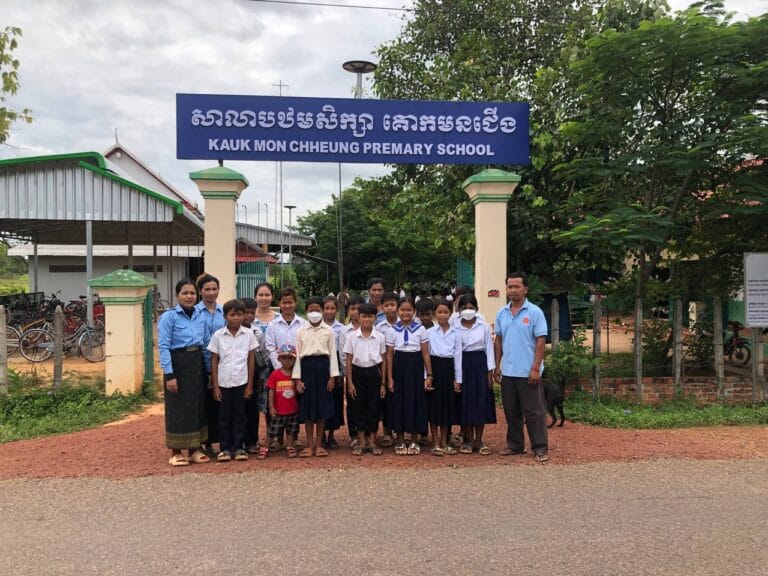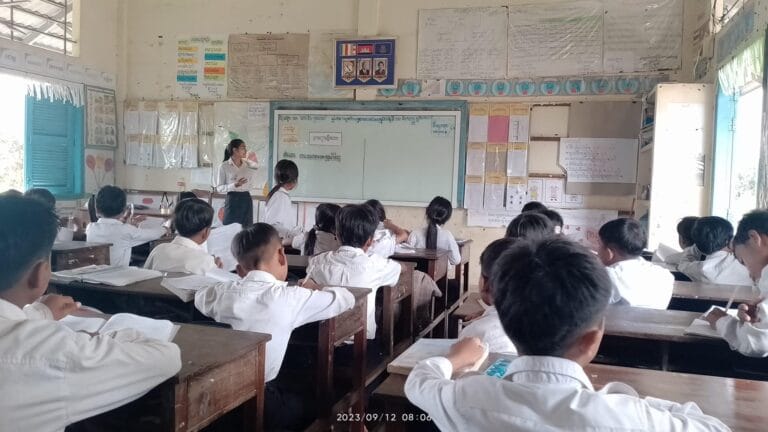Khna Por High School building
School expansion project: Creating education pathways in rural CambodiaPrivate Japanese donor Implementing partners:
Khna Por High School, in coordination with the Ministry of Education
Location:
Khnar Pou, Siem Reap
Project duration:
Ongoing support since school building construction in 2019
Sustainable Development Goals:
4, 10, 17
Background
In rural Cambodia, many children complete only a few years of primary education before dropping out due to a lack of nearby middle and high schools. Families often cannot afford the cost or travel required for further study, leaving students with limited opportunities. With the support of a Japanese donor, Dana Asia advised and managed the construction of new school buildings to expand an existing primary school into a full middle and high school, ensuring students could continue their studies within their own community.
The challenge
Although the community already had a functioning primary school, children who wished to continue their studies faced a difficult journey. The nearest middle school was several kilometres away, and high school was even further. For many poor families, travel and related costs made further education impossible. As a result, most children ended their education after Grade 6, limiting their prospects for higher education and formal employment.
Our approach
Dana Asia worked with the Japanese donor, local authorities, and the school community to create a phased expansion of the school’s infrastructure:
- Middle and high school building construction to allow students to progress beyond Grade 6 without leaving their village.
- Involved local parents, leaders, and education authorities to ensure the facilities were maintained and teaching staff were allocated.
- Provision of educational materials and development of a fully-stocked library,
- Installment of a solar water system to produce clean drinking water for students and teachers.
Impact
13
classrooms built for Grades 1-7
500
students per year with access to education
19
teachers provided by the Ministry of Education
Solar-powered drinking water system and a library also provided
Lessons learnt
Expanding existing schools to offer higher levels of education can be one of the most effective ways to break cycles of poverty in rural areas. By reducing the distance and cost barriers to continued schooling, dropout rates fall and more students, especially girls, are able to complete their education. The phased approach also demonstrated the value of long-term donor commitment, allowing infrastructure to grow in step with the community’s educational needs.
“School buildings are more than just infrastructure – they are a tangible symbol of education for all and the embodiment of a community’s belief that every child deserves to learn.”
– Lotti Fraser, Dana Asia Director of Programs









